Phonics games are an essential part of rich, engaging and effective teaching and learning. Teaching phonics in the early years should focus on explicit teaching, exploration, hands-on activities and most of all fun!
Phonics Games Part 1 is packed full of phonics games that your students will love and will deliver big phonics results. You’ll soon see how you can use our Blend and Digraph Cards in a variety of ways to make your classroom buzz with phonics excitement.
What is the Difference Between a Blend and a Digraph?
Teaching phonics can feel like a complex job.

I know that you know, but for anyone else that isn’t sure, let’s define the difference between a blend and a digraph. After all, it can be confusing.
Consonant Blends
A consonant blend is when two or more consonants are blended together, but each sound may be heard in the blend.
The most common beginning consonant blends include bl, br, cl, cr, dr, fr, tr, fl, gl, gr, pl, pr, sl, sm, sp and st. Blends can also occur at the end of words as in the word “fast”. There are also blends which contain three consonants. Common three consonant blends include str, spl, and spr.
Consonant Digraphs
A consonant digraph is when two consonants stand together to represent a single sound.
The most common consonant digraphs are sh, ch, th and wh. There are other consonant digraphs such as ph, but they generally come into the picture a bit later for lower years students.
When to Teach Digraphs and Blends
When your foundation or prep students can recognise and name all of the upper and lower case letters and know the most common sound that each letter represents, it’s probably time to introduce common consonant blends and digraph phonics games.
You’ll know when the time is right when conversations about digraphs and blends pop up and you come across them incidentally during guided reading and guided writing. It’s important to remember that while some students will be ready, others will not; this is when you need to put on your superhuman differentiation hat on.
Typically, we start with the consonant digraphs sh, ch, th and wh and then progress from there.
Download our bright and bold Sh Digraph Flashcards, Th Digraph Flashcards, Ch Digraph Flashcards and Wh Digraph Flashcards to make a solid start.
Blend and Digraph Cards
Flashcards and cards of every shape and size are a must when teaching phonics and they are the perfect teaching tool for phonics games. That’s why we have created our new Blend and Digraph Cards. They are available for you to download and could possibly be your new best friend for teaching phonics. With a simple click of a download button, you’ll be raring to go with 32 blend and digraph cards that can be used in a multitude of ways.
In this blog, I’m going to show you creative and imaginative ways to get the most out of this resource. I’m going to share phonics games that your students will love, engage with and go a long way to securing knowledge and understanding.
Download our Blend and Digraph Cards for 32 blend and digraph cards now.
Digraph Musical Chairs
Nothing beats playing an exciting game of musical chairs. So, why not give it a digraph and blend twist and combine teaching phonics with this well known active game.
All you need to do is arrange some chairs back to back and place a Blend and Digraph Card on each chair. When the music begins ask your students to walk around in a circle. When it stops, encourage your students to pick up a digraph or blend card, say it out loud, and sit in a chair. The last student to sit down is out.
Top Tip: Given the elimination element of this game, expect a bit of rivalry and limit the number of students taking part and go for a small group activity.
Phonics Picture Charades

Who doesn’t love a game of picture charades? Your students will love to combine phonics and picture charade fun in small groups or even as a whole class!
All you need is a set of Blend and Digraph Cards, a whiteboard and board pens. It’s a few teacher-led games of phonics picture charades before asking your students to take the lead. When your class has got the hang of it, encourage your students to have a go.
- Encourage a more confident learner to get the game started by choosing a digraph or blend card, (being sure not to show the rest of the class).
- Encourage and support the volunteer to think of familiar objects that begin with the digraph or blend chosen.
- Ask the volunteer to draw objects beginning with the digraph/blend on the whiteboard.
- Encourage the rest of the class to put their hand up and identify the objects drawn and the digraph/blend.
Write the Room
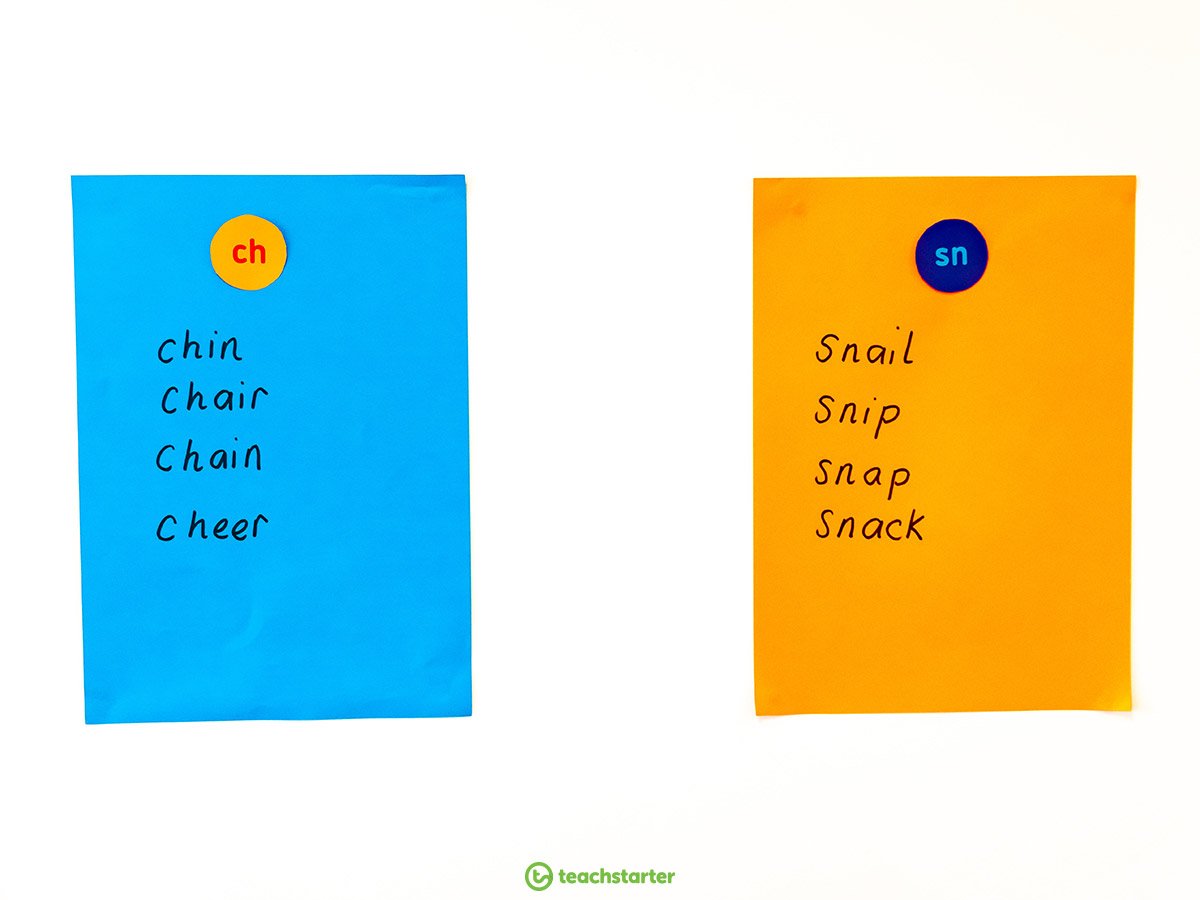
Write the Room is a brilliant way to get your students up and away from their desks while consolidating their knowledge and understanding of blends and digraphs.
All you need to do is hang sheets of chart paper around the room and post a blend or digraph above each one. Individually, or with a partner, ask your students to move around the room adding one word that begins, ends or contains (depending on student level) that blend/digraph. Remind your students that words may be used only once.
Giant Digraph and Blend Board Game
For an energetic and engaging way to teach digraphs and blends, why not create a giant board game on your classroom floor.
It’s as easy as making a board game path with Blend and Digraph Cards and finding a large dice. Students roll a number cube and move that many spaces. Then they say the sound and a word that begins with the blend/digraph they landed on. The first child to make it to the finish line wins!
Swat a Digraph or a Blend
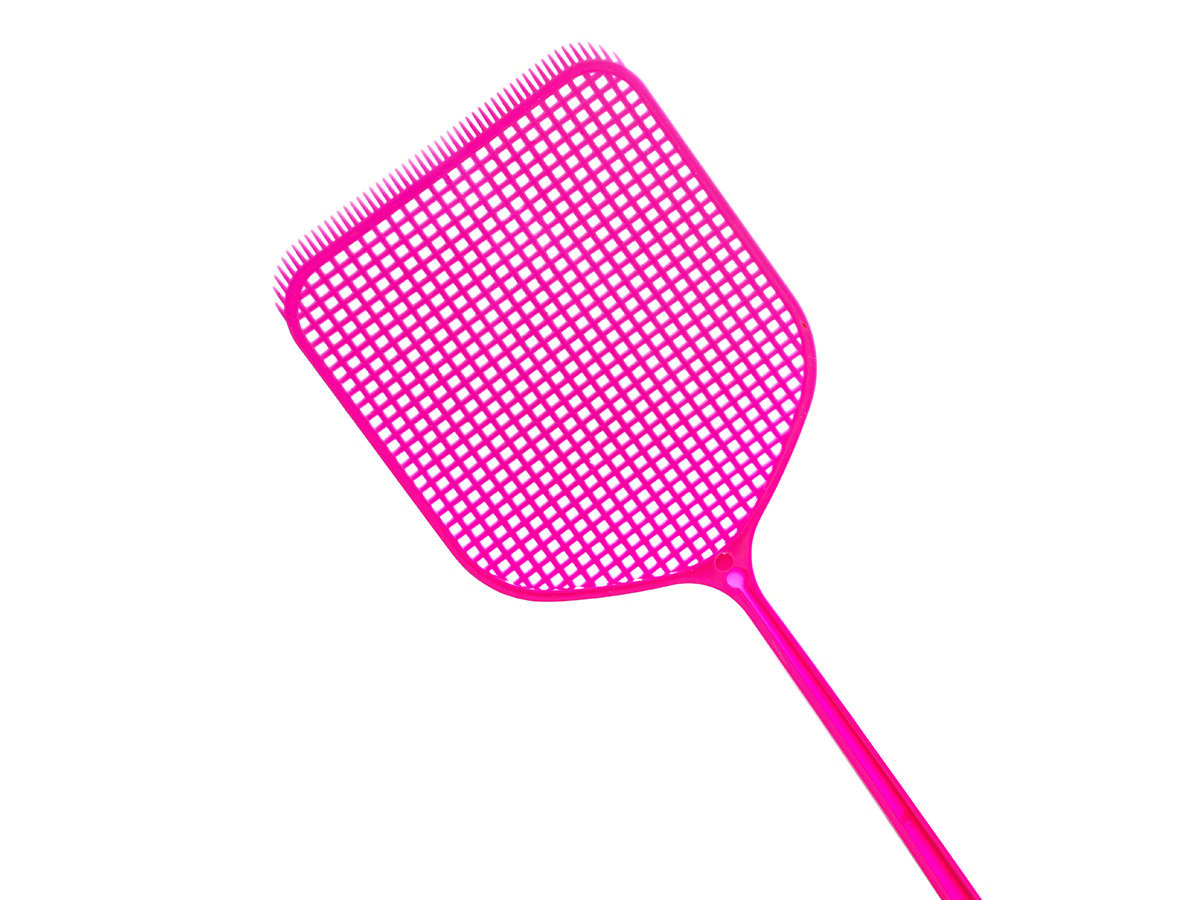
Watch out digraphs and blends (and flys), this fun activity is going to flatten you. This energetic phonics activity is perfect for a small group during Literacy groups.
Create a grid with the Blend and Digraph Cards on top of a table. Give each student a fly swat. Next, say a word and have the students swat the blend or digraph it begins with. The first student to swat it correctly wins!
Digraph and Blend Card Games 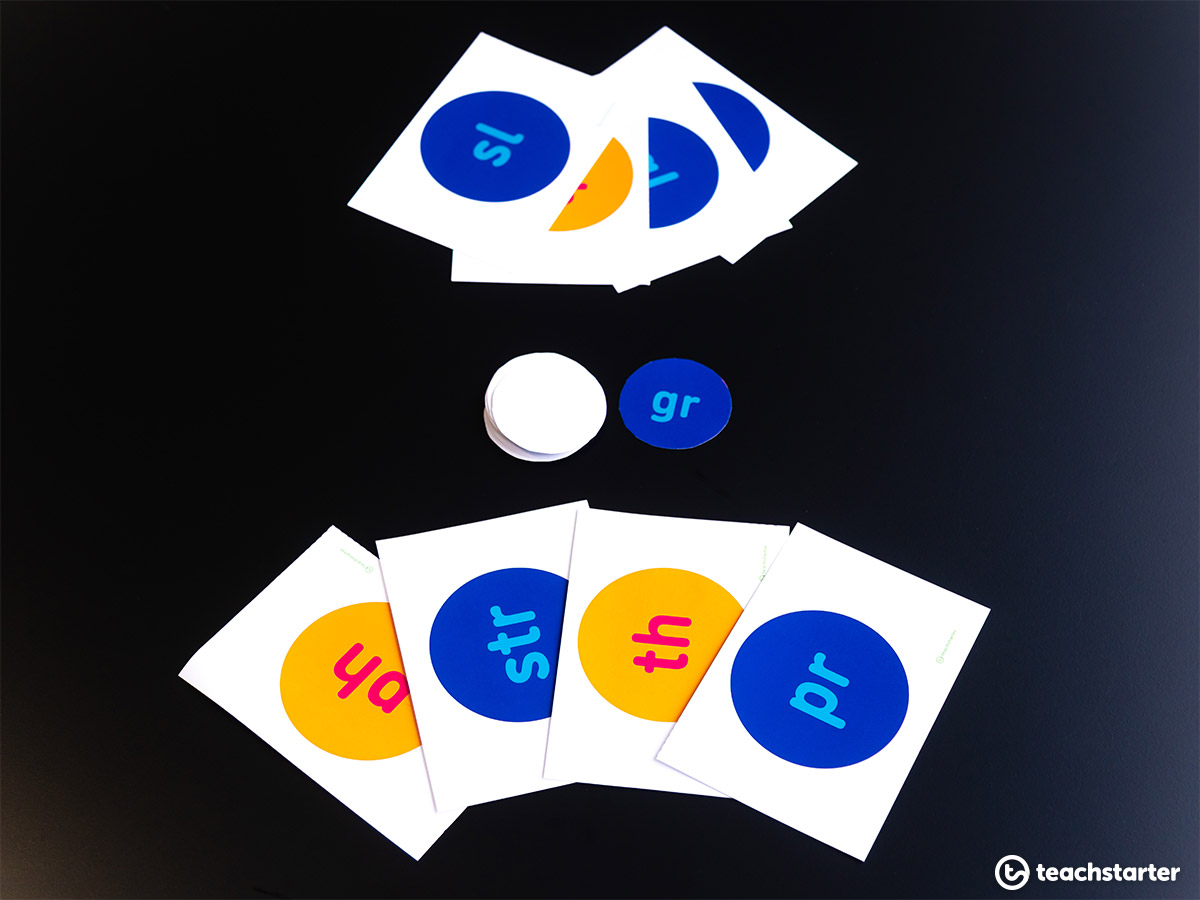
In a small group, give each student five Blend and Digraph Cards. Encourage your students to hold their cards so that others can not see them. Say a word beginning with one of the blends. If a student is holding that blend card, they lay it down face up. The first person to have all five cards face up wins.
Digraph and Blend Sit Spots
Set up some Digraph and Blend Cards sit spots in the morning before your class arrives. I used On Your Marks velcro dots from Elizabeth Richards. These fun and colourful hook-and-loop dots are perfect for place marking and easy to position on any short-weave carpet.
When each student has found a sit spot, ask them to think of a word that includes the digraph that they are sitting on! There are many ways that you can extend this easy phonics activity. Here are a few…
- Students to share their word with a partner, swap places and repeat.
- Students share their word during the roll call.
- Play phonics twister in a small group – “right hand sw, left foot th”.
- Play a memory game in a small group. Using a small number of cards, place the cards face down and ask the students to recall where the different digraphs and blends are.
Phonics Construction Blocks

Do you have students in the class who seem to lack the motivation to learn phonics? Building blocks could be the answer. This phonics activity can work particularly well with students who love construction activities. Why not try it with a small group who are reluctant to get involved in learning phonics.
You can either write directly onto the block with a sharpie or use masking tape strips so that digraphs and blends can be easily removed and changed.
The Importance of Explicit Phonics Instruction
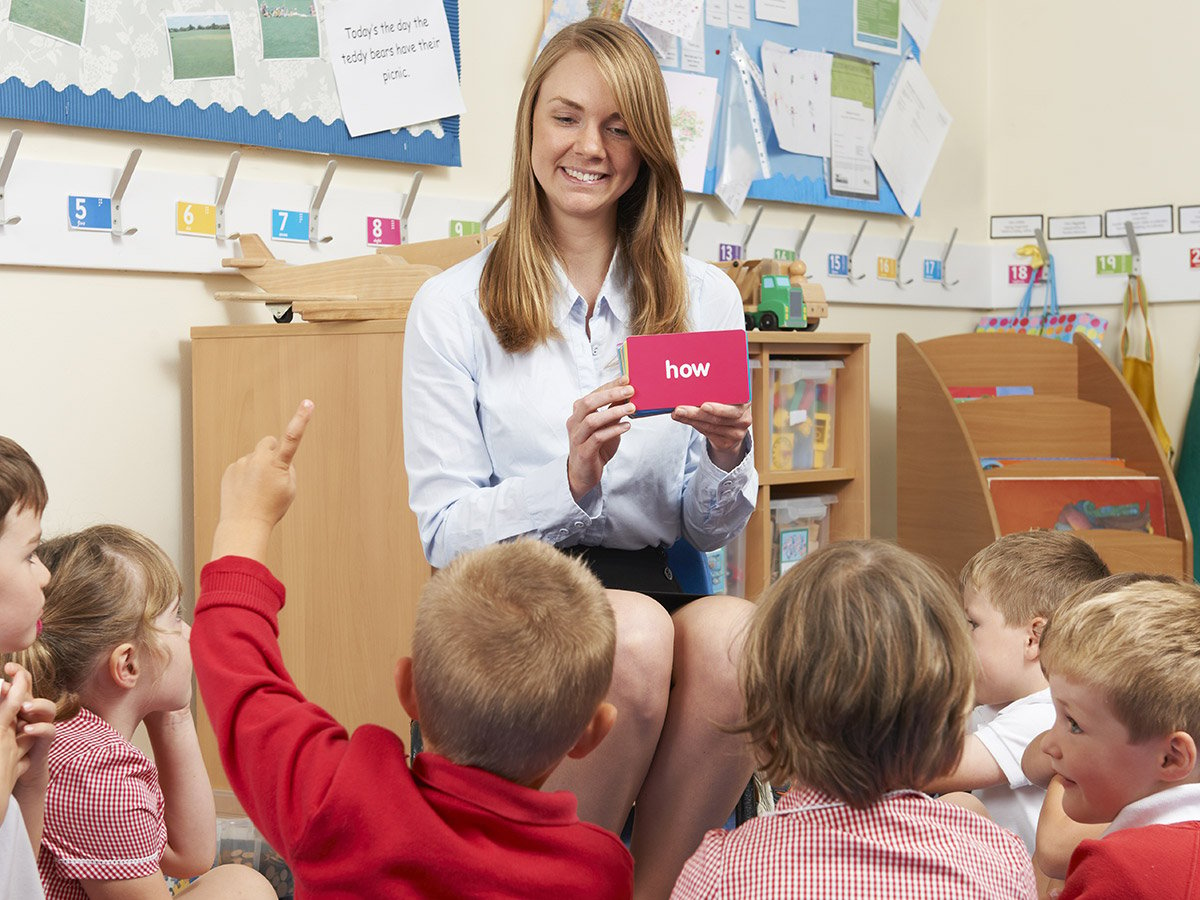
How and when do you teach phonics?
There are two main ways that we can teach phonics. We can teach phonics explicitly (teaching sound/spelling correspondences in a direct and systematic way) or implicitly (from reading whole words and as students encounter them in text).
Research has shown that students who are taught phonics through explicit instruction become better readers. Perhaps there is a time and a place for both teaching approaches? An important part of the teaching of phonics is differentiation and meeting the needs of individual students.
However you teach phonics, it’s always a good time to include some phonics games. For all of your phonics teaching resource needs, go to the Phonics Learning Area on our website.
…and don’t forget, if there’s anything that you need that we haven’t already created, please make a request via the Request a Resource page on the Teach Starter website.
Teaching phonics can be so much fun with a little bit of imagination and creativity.
Download the Digraphs and Blend Cards now and try one or two of these phonics games with your students this week.
You’d be crazy not to make the most of this resource and try a few of these fun ideas.
Watch this space for Phonics Games Part 2 …

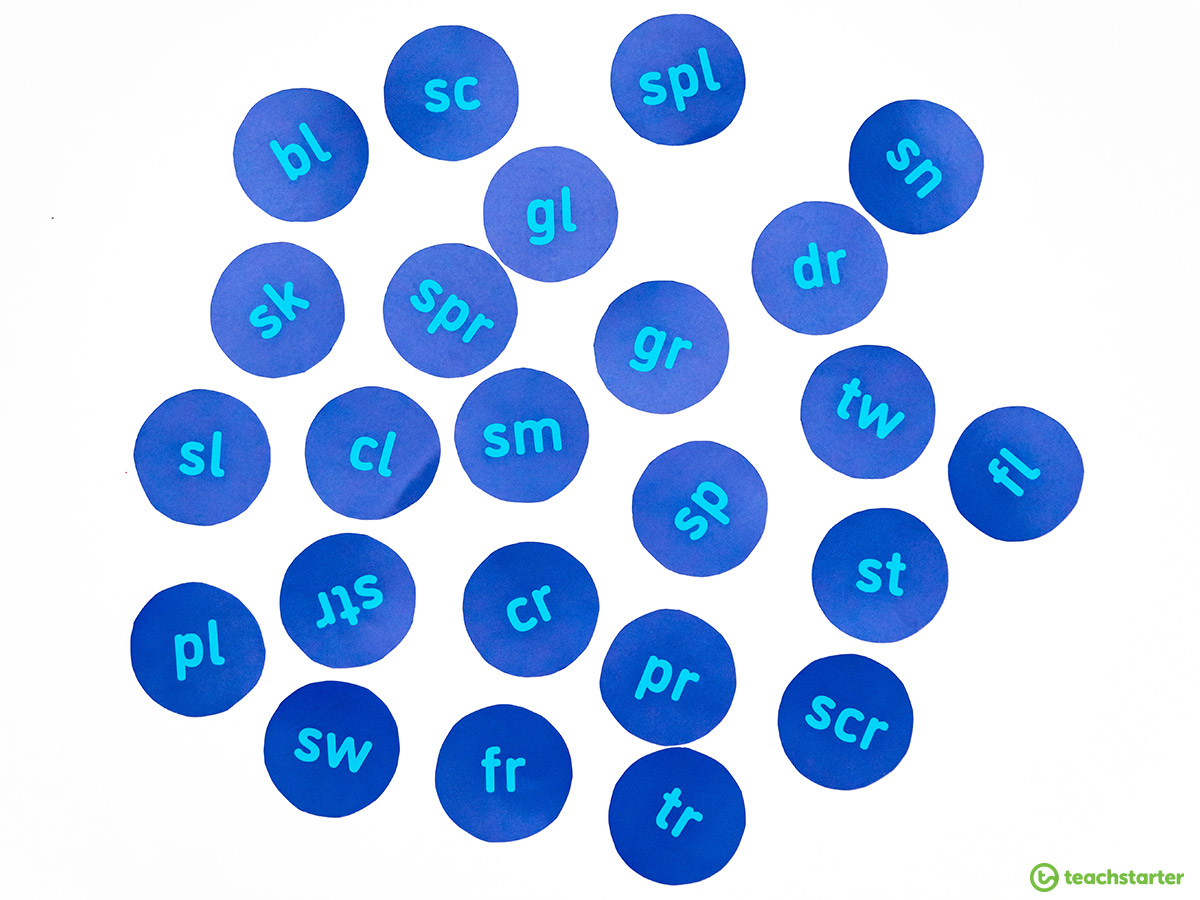
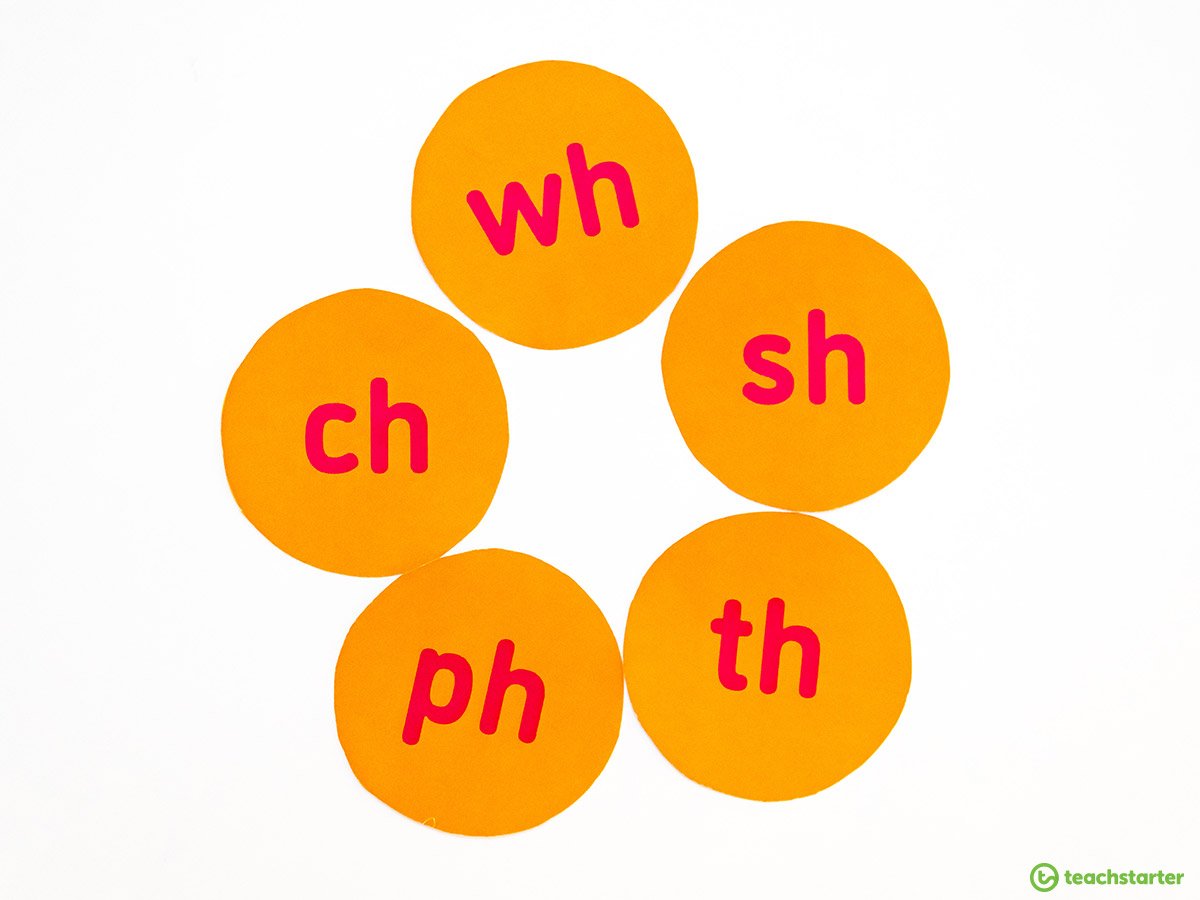

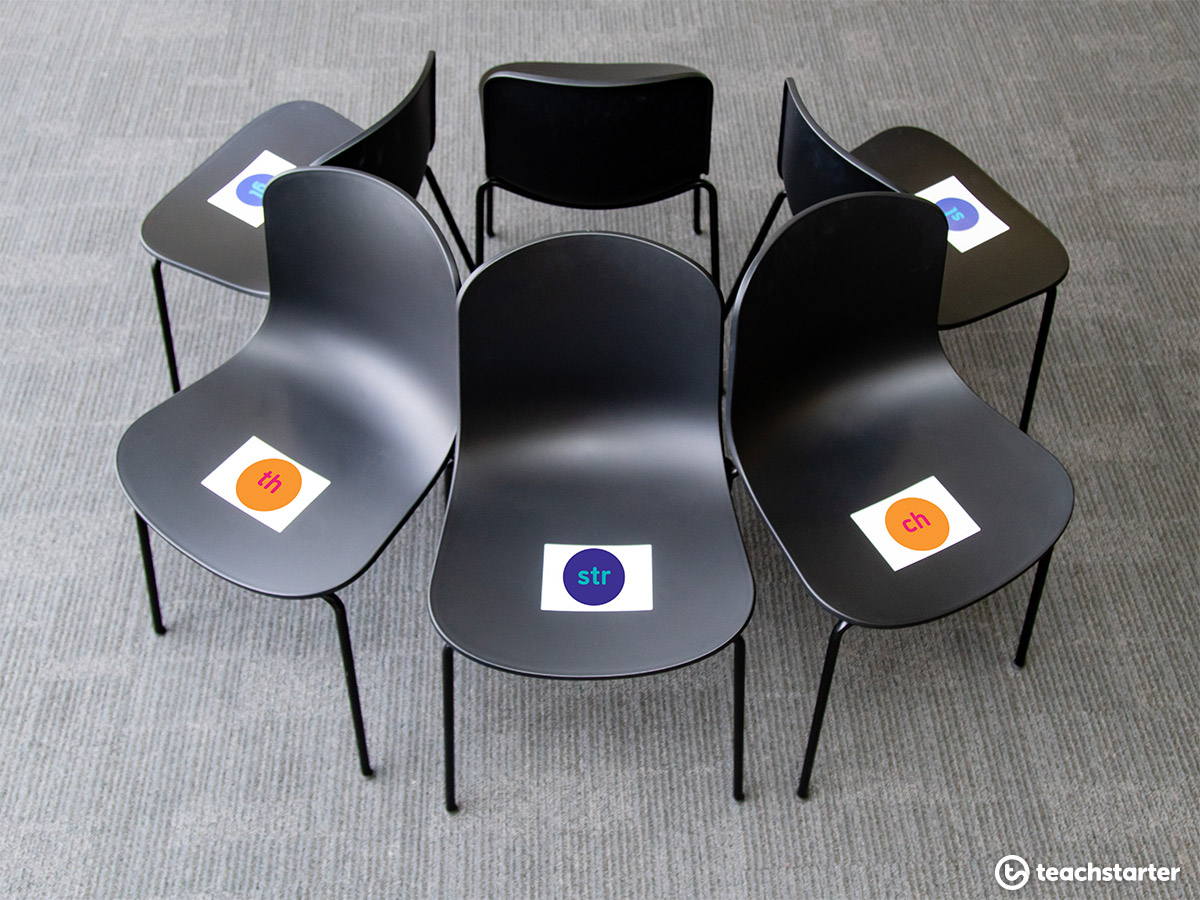
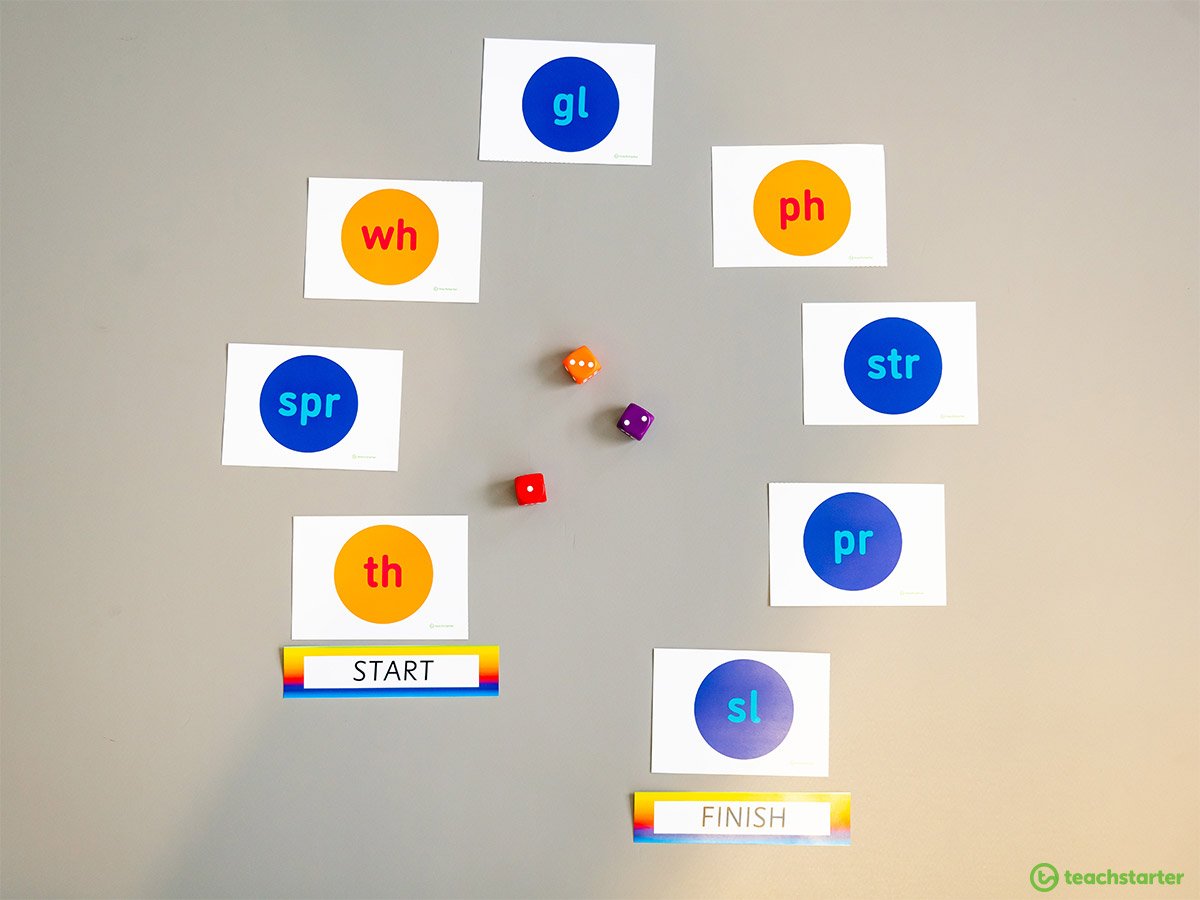
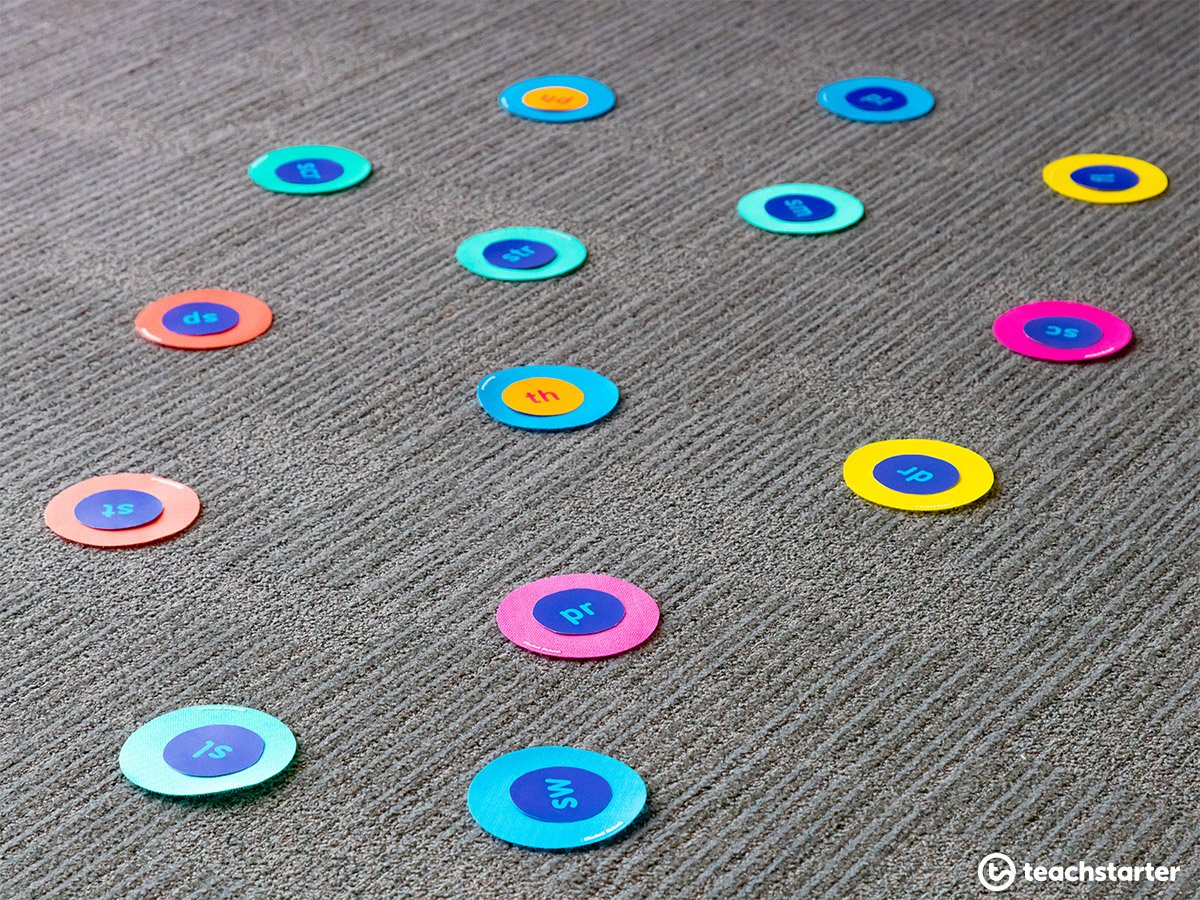






Thank you so much. This resource will be most helpful.
Hi Carolyn, I'm so glad that you are finding this resource useful. I loved creating it! Have a great day. Ali
Love these ideas to make learning blends exciting and engaging going to try these this week with my year 2's!
Hi Tracy, thanks for your comment. I hope that you and your class have lots of fun trying out some of these ideas. Have a great day, Ali